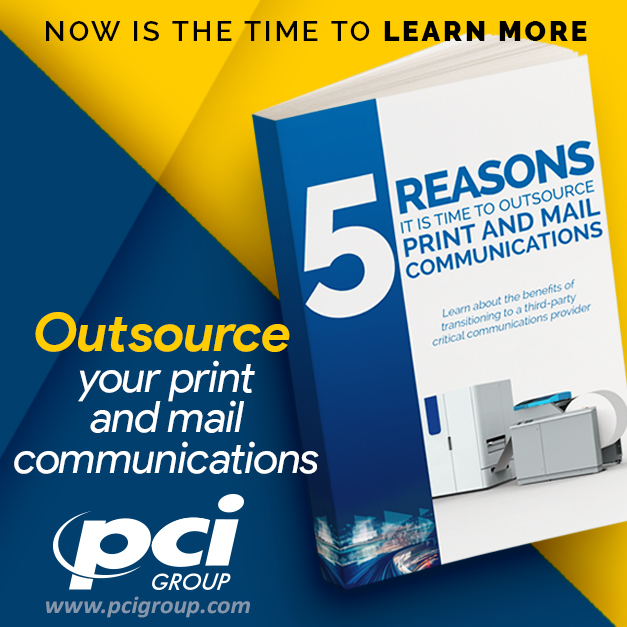
What This Trend Means to Your Printed and Mailed Customer Communications
Print and Mail In-plant facilities are closing, and depending on your point of view, at a fairly rapid pace. The 4,000 closures over the last 10 years represent an estimated 20-25% decline in businesses that maintain in-house print and mail capabilities. Multiple factors have led to this trend. Most prominently is the shift toward digital customer communications, such as email and text. Other factors include high costs related to labor, expense to maintain and update equipment, lack of required technology, and the costs associated with maintaining regulatory compliance.
While these reasons support the closing trend, they don’t tell the whole story. Most of the companies that shuttered their in-plants found that outsourcing just made more sense. Many of these companies report improved workflow, ability to track mailings, lower error rates, more complete disaster recovery contingency plan, improved on time rates, and elimination of compliance headaches.
Next, let’s examine the trend and how third-party offerings are a viable solution.
As Digital Communications Increase, Mailings Go Down
Nearly every industry that sends customer communications has seen a significant drop in physical mailings over the past decade. For most, it was not a question of whether their business was increasing or decreasing but it was everything to do with technology and the convenience for the customer of receiving communications digitally.
While many prefer to receive communications digitally, paper statements are still regarded as important by consumers. In a recent consumer preferences study, 90% of respondents want to be able to choose the format for communications, either mailed or digital. A CreditCards.com poll of U.S. adults found that 54% are still receiving some kind of bill or statement via mail. The survey also revealed that many consumers get both, with 55% receiving both digital and printed copies of the same statements.
Print is not dead in consumer communications. The difference now is there are options and these options are driving down the print volume in many in-plants. With fixed costs such as staff, machinery, and technology, the more expense you incur per piece. When your per piece price rises, it’s time to investigate alternatives such as outsourcing.
Equipment & Technology Costs
The equipment and technology necessary in an in-plant environment is costly. Automation is critical for high production. Cameras, bar code readers and other specialized equipment are a necessity for efficiency, accuracy and compliance. Unfortunately, it’s a catch twenty-two. To become more accurate, efficient and competitive in the marketplace, a company must invest in their in-plant. The required capital investments to become more efficient and compliant only further increases cost the per piece.
Using Outsourcing as an Advantage
Due to economies of scale, outsourcing print and mail communications typically results in a reduced per piece price and substantial overall cost savings. Outsourcing can also be viewed as an advantage for many other reasons that include:
- Reduced postage
- Increased compliance
- Built in disaster recovery
- And, if partnered with the right vendor, much needed piece level tracking and tracing.
Over the last ten years, nearly one in-plant a day has closed. How does this trend impact you if your business has an in-plant? The answer is the trend is pointing the way to overall cost reductions, improved customer communications and elimination of headaches surrounding compliance and disaster recovery. It’s time to examine your numbers and compare them to the savings of outsourcing.


